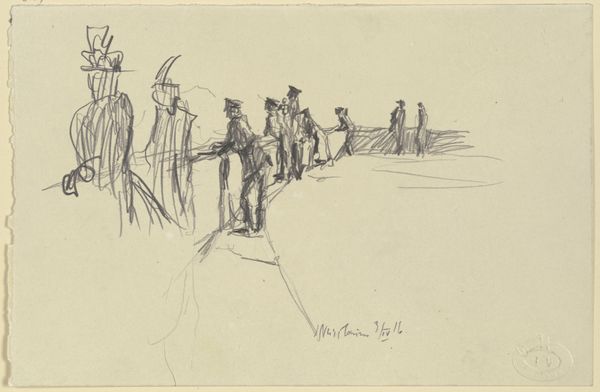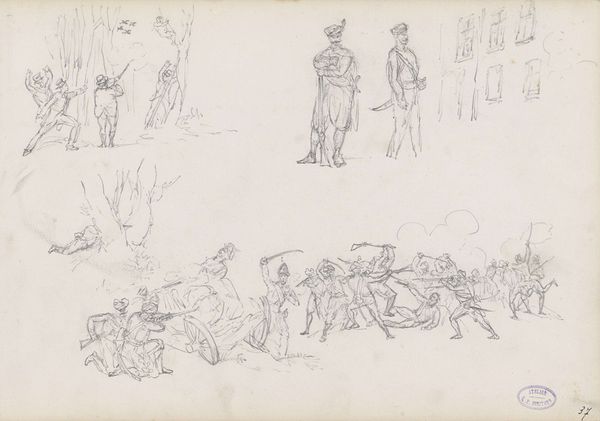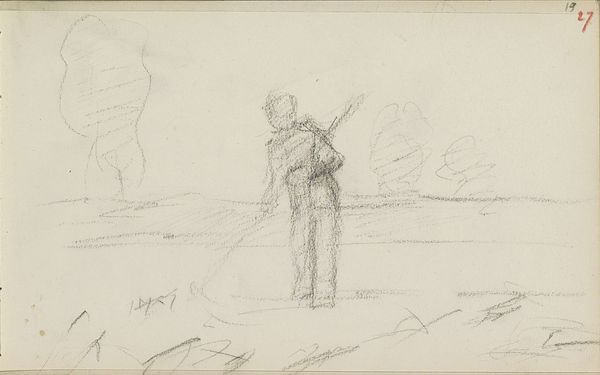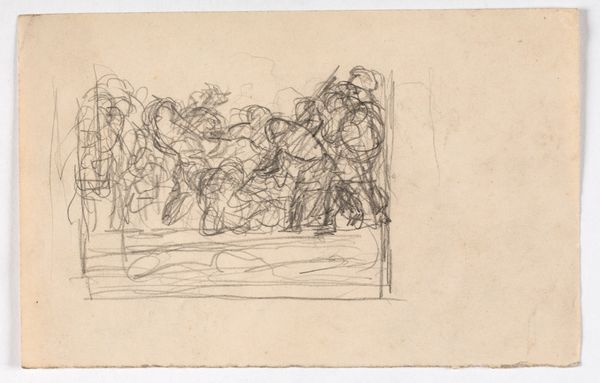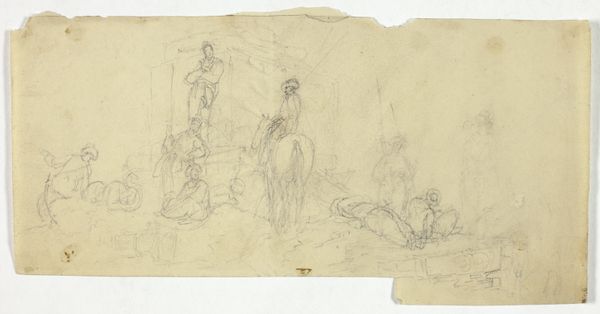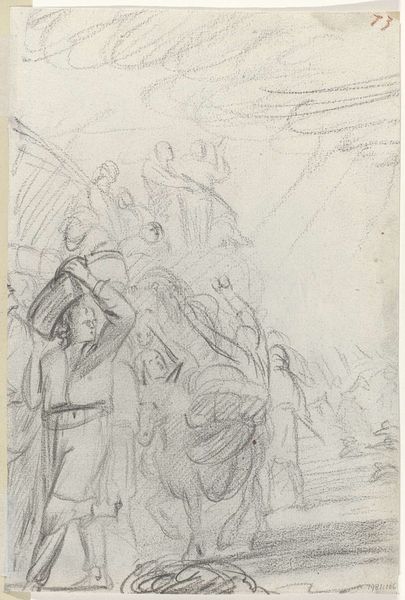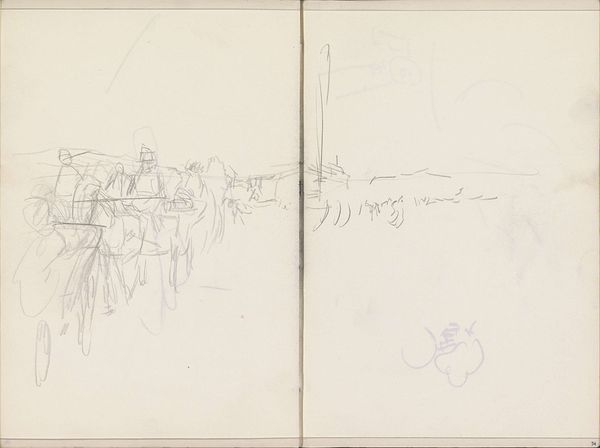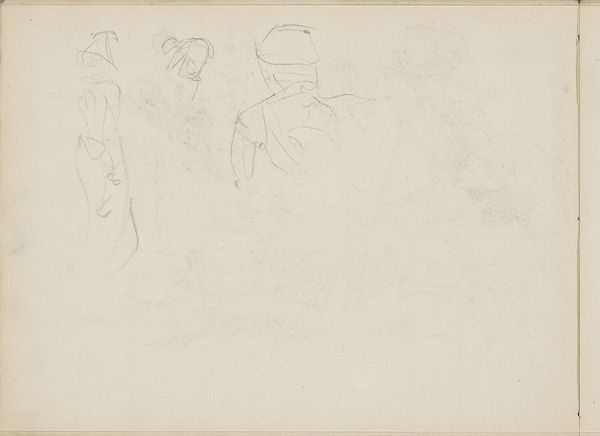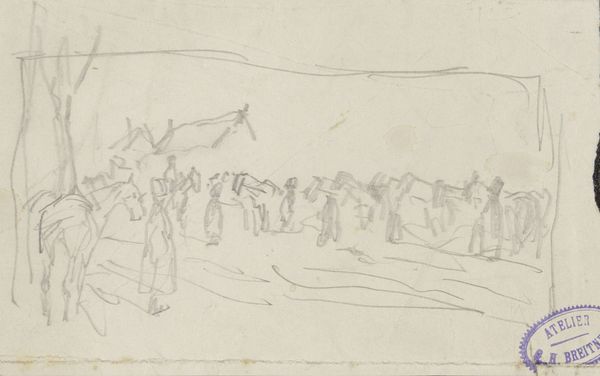
drawing, pencil, graphite
#
portrait
#
drawing
#
sketch book
#
landscape
#
figuration
#
pencil
#
graphite
Dimensions: height 129 mm, width 193 mm
Copyright: Rijks Museum: Open Domain
Editor: Here we have August Allebé’s pencil and graphite drawing, “In het Maas-Waalse,” likely created sometime between 1848 and 1927. There's a kind of spectral quality to the figures, particularly the ones behind the central figure; it’s like they are fading in and out of focus. What elements of its composition strike you? Curator: The preliminary nature of the sketch emphasizes the act of seeing. The artist captured this scene focusing more on line than mass and volume. Note the dominance of line; how it suggests spatial recession while also flattening the composition, drawing the viewer’s eye across the plane of the paper. Observe the lines’ weights as they thicken or disappear. The modulation suggests form through emphasis, and then dematerializes the subject. Editor: It almost feels unfinished, like a snapshot of an idea rather than a fully realized work. Is that intentional? Curator: Indeed, the concept of "finish" is interesting here. Allebé is highlighting process over product. Look at how the figures become less defined as they recede. This could be read as a commentary on perception itself – what we see clearly versus what fades into the background. There is semiotic density even within these sketchy figures; do you perceive this piece representing temporality and being in transition? Editor: I can see that, the more I look. Thank you; considering how the line work itself contributes meaning is definitely a new approach for me. Curator: Considering such works opens discussions on intention and technique. A valuable exercise.
Comments
No comments
Be the first to comment and join the conversation on the ultimate creative platform.
